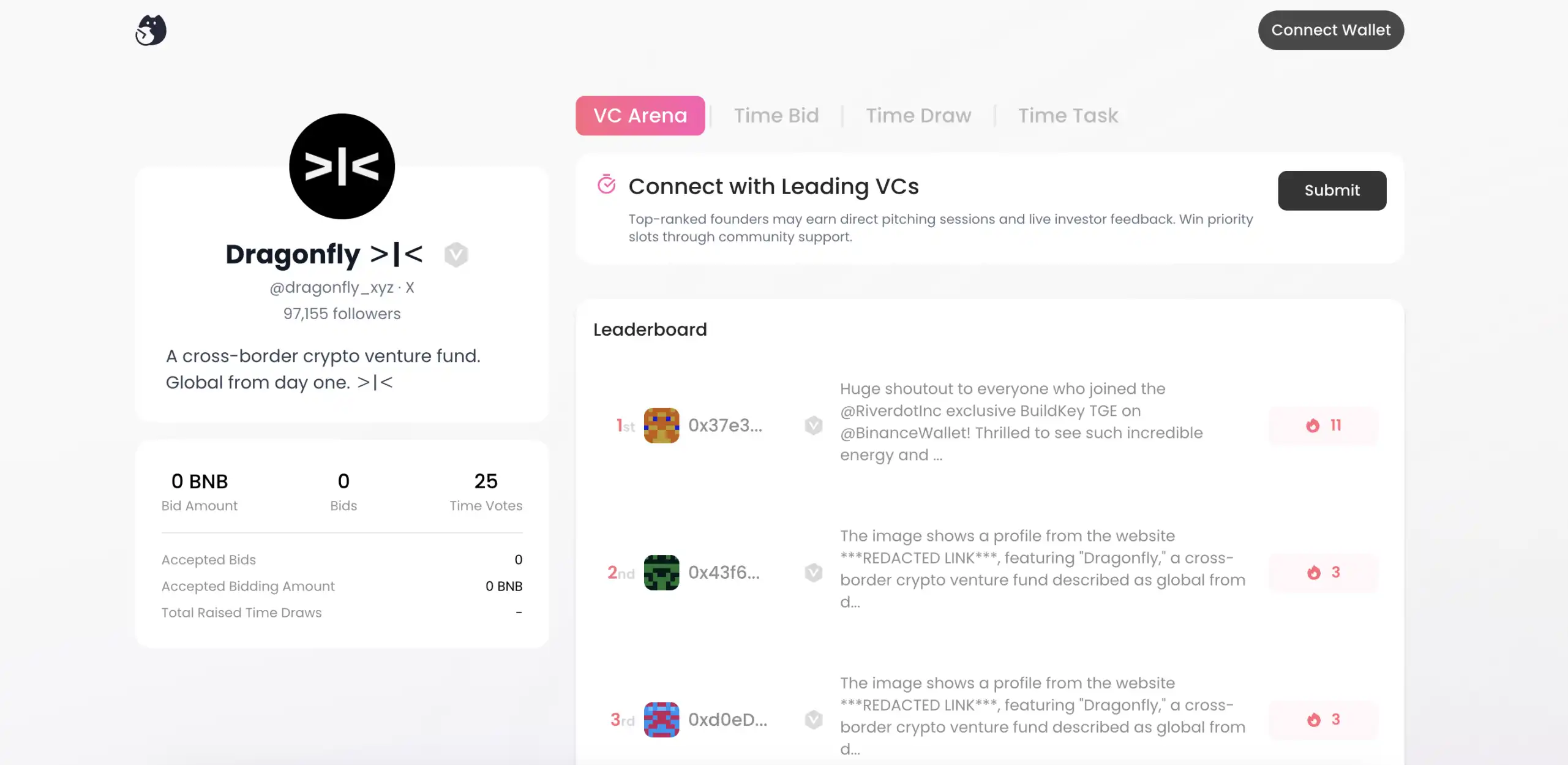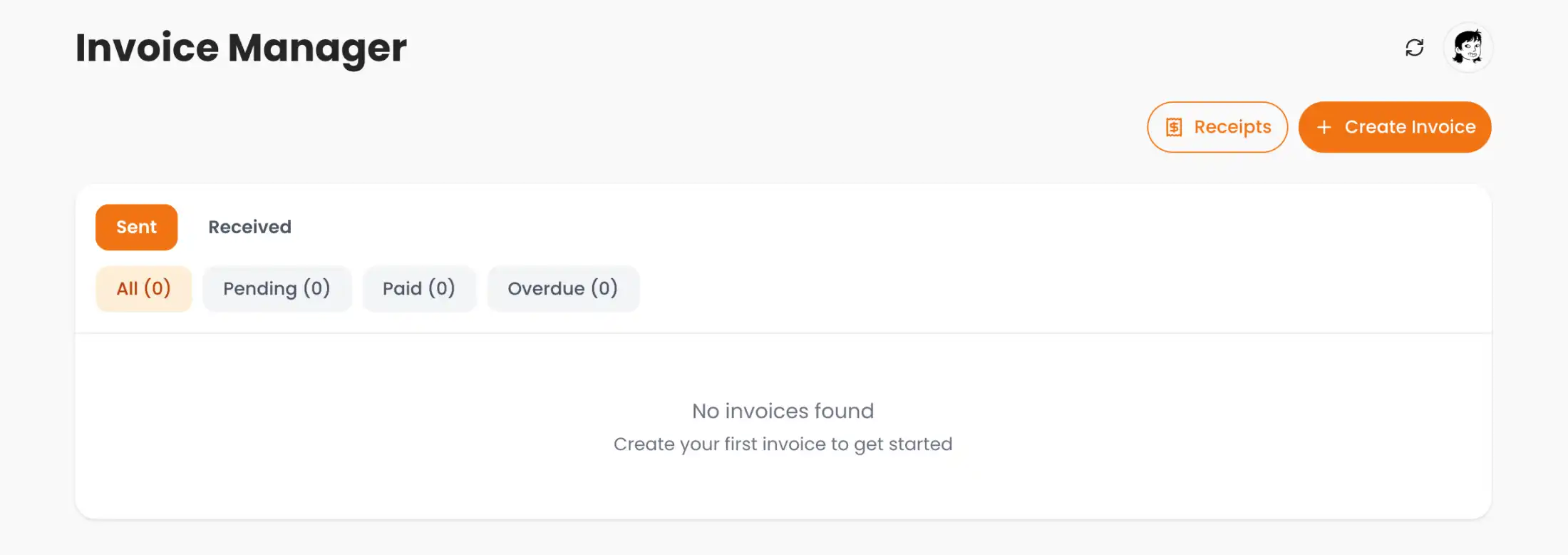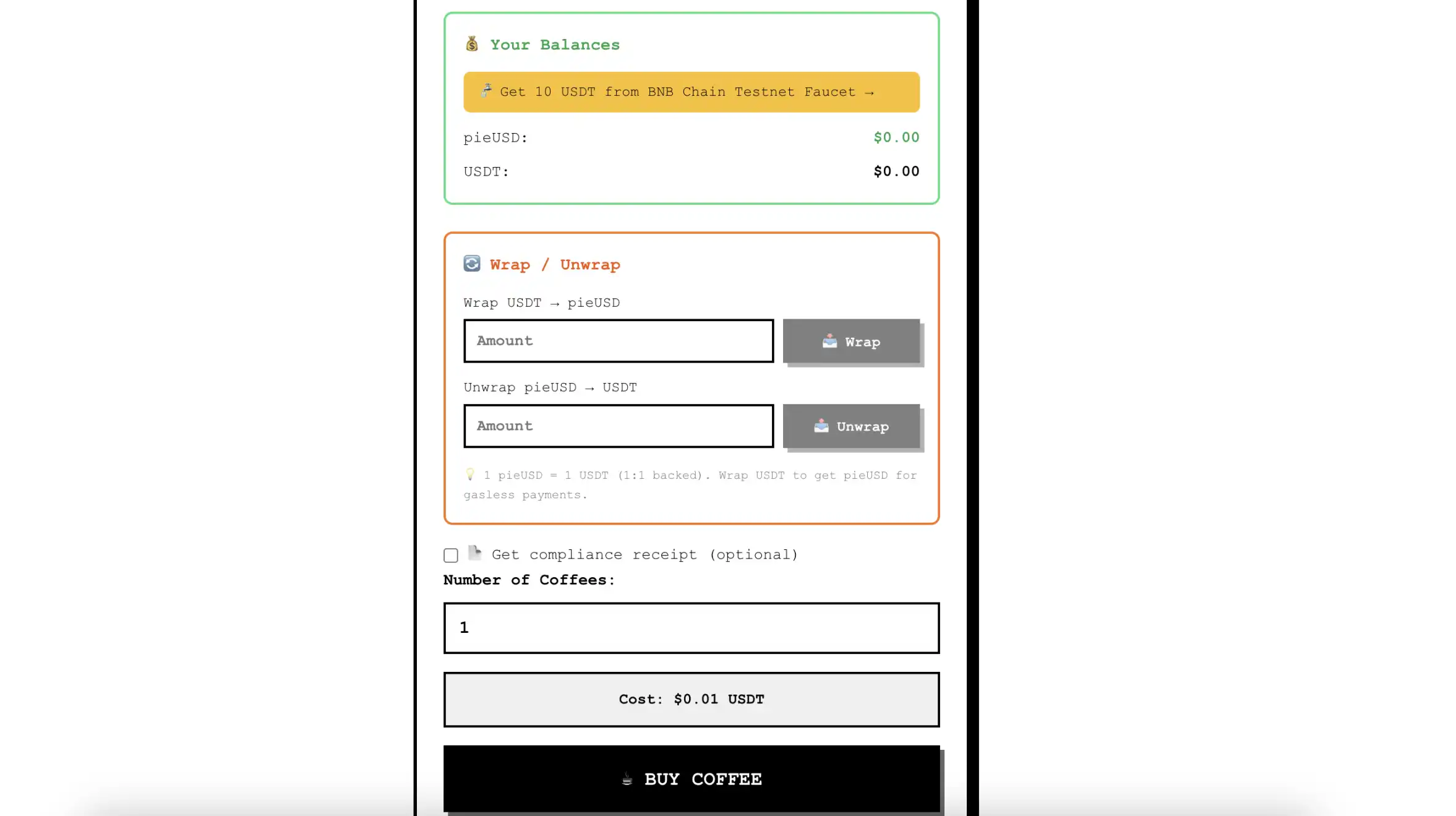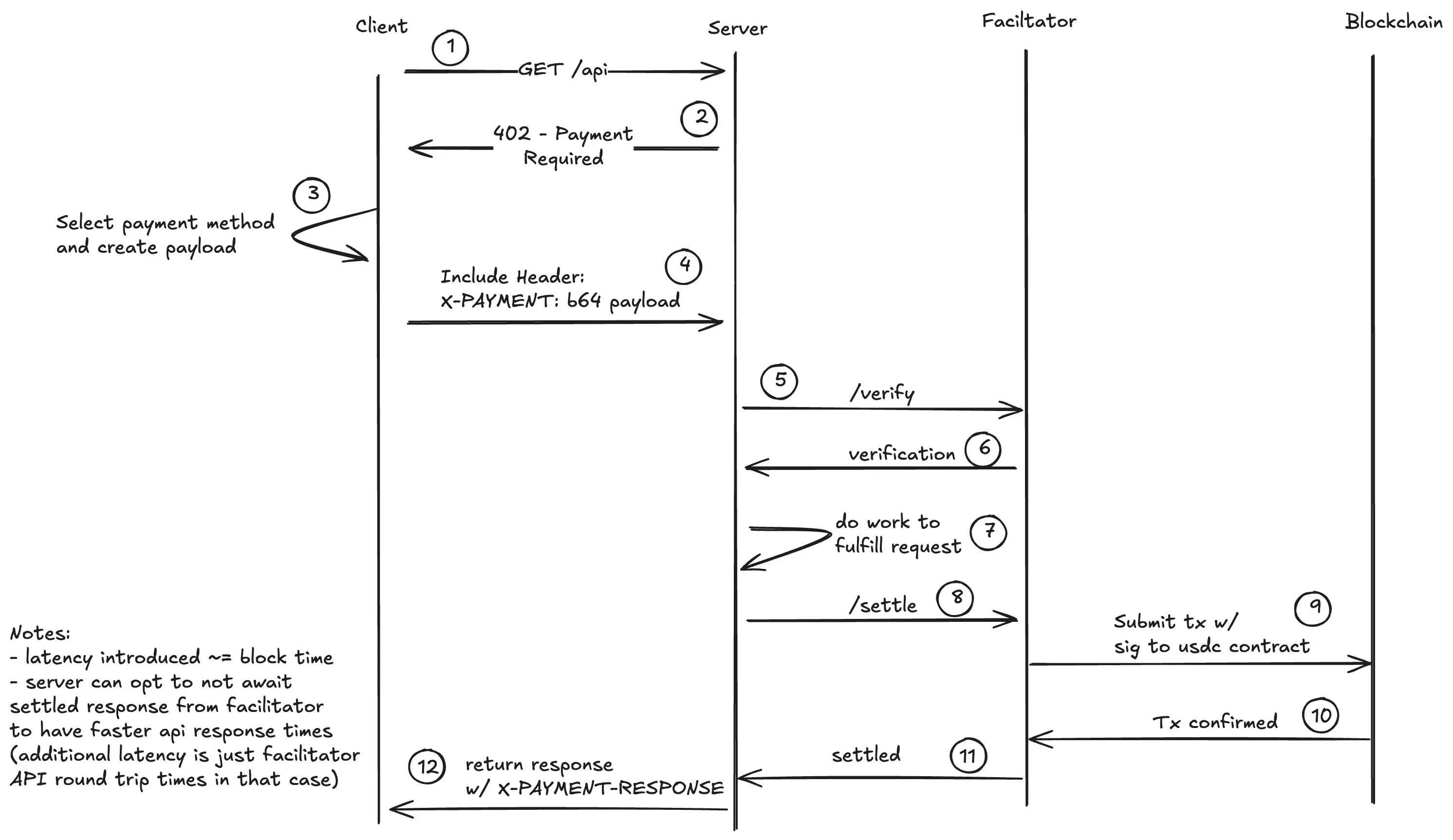Original Title: "What is Pieverse, which coincidentally caught the x402 windfall before Pre-TGE?"
Original Author: Eric, Foresight News
x402 added fuel to the AI payment narrative, but the fire did not immediately reach the BNB Chain. The reason is that x402, being too early, only supports the ERC-3009 standard, while stablecoins on the BNB Chain, including USDC, do not support this standard.
At this point, the payment protocol Pieverse, which has been supported by Binance and BNB Chain since being selected for MVB, stepped in. It not only solved the issue of BNB Chain's inability to support x402 by launching the USDT wrapped token pieUSD that supports the ERC-3009 standard, but also upgraded x402, which only supported "payment" functionality, to x402b. In simple terms, Pieverse generated verifiable receipts for payments based on its original foundation, proving that the payment was a transaction between specific parties, rather than a spontaneous action by AI.
The Binance wallet will launch Pieverse's Pre-TGE event at 4 PM on October 29. By serving the BNB Chain ecosystem, this quasi-new project, which adds verifiable proof to on-chain payments, has ushered in a small highlight moment in the era of AI payments.
A Protocol Related to "Time"
Pieverse's development has gone through two stages. At its inception, it was positioned as a "TimeFi" protocol, with the core of the Pieverse Timepot model being to help those who need to spend time matching with people or resources to find their corresponding targets more quickly through a series of mechanisms on the platform.
The initial three products of Pieverse included Time Bid, Time Draw, and Time Task. Time Bid allows users to bid for professionals' time, and Pieverse will verify the "professional's" real level through platforms like LinkedIn. The final successful bidder can communicate directly with the professional on the platform via Zoom, etc.; Time Draw provides opportunities for private interaction with investors, traders, celebrities, etc., through a lottery system; Time Task offers a platform for everyone to post demands and provide services.
Putting aside the concept, this is just an intermediary platform, and forcibly linking it to time seems overly contrived. Currently, while these three products are still operational, they appear to have lost any active engagement. Later, Pieverse launched VC Arena, which gained some attention. This platform applied the mechanisms of the aforementioned products to facilitate connections between VCs and startup project teams, catering to some actual needs.

It is unclear whether they realized the issue with the design concept, but Pieverse shifted direction and launched a more financialized and participatory product, Time Challenge.
Time Challenge essentially transforms daily commitments into structured, time-limited challenges with actual financial risks. Whether it's fitness goals, productivity goals, or personal milestones, users can create or join challenges, lock in risks, and receive rewards based on their evaluation of the outcomes.
Challenges are divided into two types: Prediction Challenges require participants to set a goal and wager a certain amount, while other users can also bet on whether the challenger can achieve the goal within the time limit. The final winner can take the money wagered by the challenger and the party that predicted incorrectly. Commit Together involves a group of people with the same goal betting the same amount on their ability to achieve that goal, with the successful participants taking the money from those who did not complete it.

It is said that when individual interests become collective interests, it motivates individuals. This game invites everyone to supervise themselves and collectively agree to achieve goals, and when real money is involved, it brings an inexplicable excitement, which is reflected in the number of participants. Although many subsequent activities are challenges set by Web3 projects to complete certain tasks, they are indeed much more interesting compared to the aforementioned scenarios.
Transforming Payments to Ride the Wave
On the 9th of this month, Pieverse announced the launch of the payment tool Pieverse Timestamping. Unlike most payment tools, Pieverse, based on its previous development experience related to "timing," has implemented a process for automatically creating invoices, stablecoin payments, and generating receipts that comply with jurisdictional legal and tax requirements, pairing each transaction with an on-chain timestamp to create immutable, verifiable proof of payment.

At least for now, choosing to pivot to payments seems to be the right decision. Less than two weeks after announcing the new product, x402 began to dominate the front pages of major tech media, and Pieverse took the opportunity to add verifiable components to x402 with the freshly launched Timestamping and went live on the testnet, allowing BNB Chain, which originally had no token support for ERC-3009, to overtake the competition.

The transaction process using x402b roughly involves:
Client to resource server: Send an HTTP request with the X-PAYMENT header, including payment + optional compliance metadata.
Resource server to Facilitator (the infrastructure service provider for "on-chain payment + verification + settlement"): Verify the signature and initiate settlement via /settle.
Facilitator to blockchain: Use the user's signed authorization to call transferWithAuthorization on the pieUSD contract (no Gas fee required).
Facilitator to BNB Greenfield (optional): Generate a compliant receipt and upload it to Greenfield, making the proof immutable and auditable.
Facilitator to resource server and then to client: Return a standard x402 response, optionally including the Greenfield receipt URL.
In simple terms, a single payment process includes user signatures, service provider submissions, and BNB Greenfield storing proof, pushing the development of x402 on the BNB Chain forward significantly. It also successfully attracted market attention before the token issuance.
A Chinese Team with a Strong Web3 Background
Currently, the publicly disclosed co-founder of Pieverse is Colin Ho, who appears in the financing press release, but no further information can be found. However, three individuals associated with Pieverse on LinkedIn have shown a strong Web3 native background.
Chief Marketing Officer David Chung previously worked on user experience and copy content at the U.S. Bitcoin peer-to-peer trading platform Paxful. A self-proclaimed "core contributor," H Fran, worked in investment at Hony Capital in his early years, and his startup was later acquired by Alibaba. Another co-founder, Junjia He (likely the technical lead), was a software engineer at Uber and later joined QuarkChain as an engineer in 2018, where he not only researched scaling blockchains through sharding but also led DeFi projects such as stablecoins, DEX, and lending markets.
In April of this year, Pieverse was selected for the ninth season of the BNB Chain Most Valuable Builder (MVB), and just last week, Pieverse officially announced the completion of a $7 million strategic financing led by Animoca Brands and UOB Ventures, with participation from 10K Ventures, Signum Capital, Morningstar Ventures, Serafund, Undefined Labs, and Sonic Foundation, among others.
It seems that from being selected by the BNB ecosystem to pivoting to payments, to financing and helping BNB Chain support x402, Pieverse has been on point with its timing. If the market heat for AI payments and x402 can be sustained for a while, Pieverse may once again "catch up" when it comes to token launch.
免责声明:本文章仅代表作者个人观点,不代表本平台的立场和观点。本文章仅供信息分享,不构成对任何人的任何投资建议。用户与作者之间的任何争议,与本平台无关。如网页中刊载的文章或图片涉及侵权,请提供相关的权利证明和身份证明发送邮件到support@aicoin.com,本平台相关工作人员将会进行核查。




